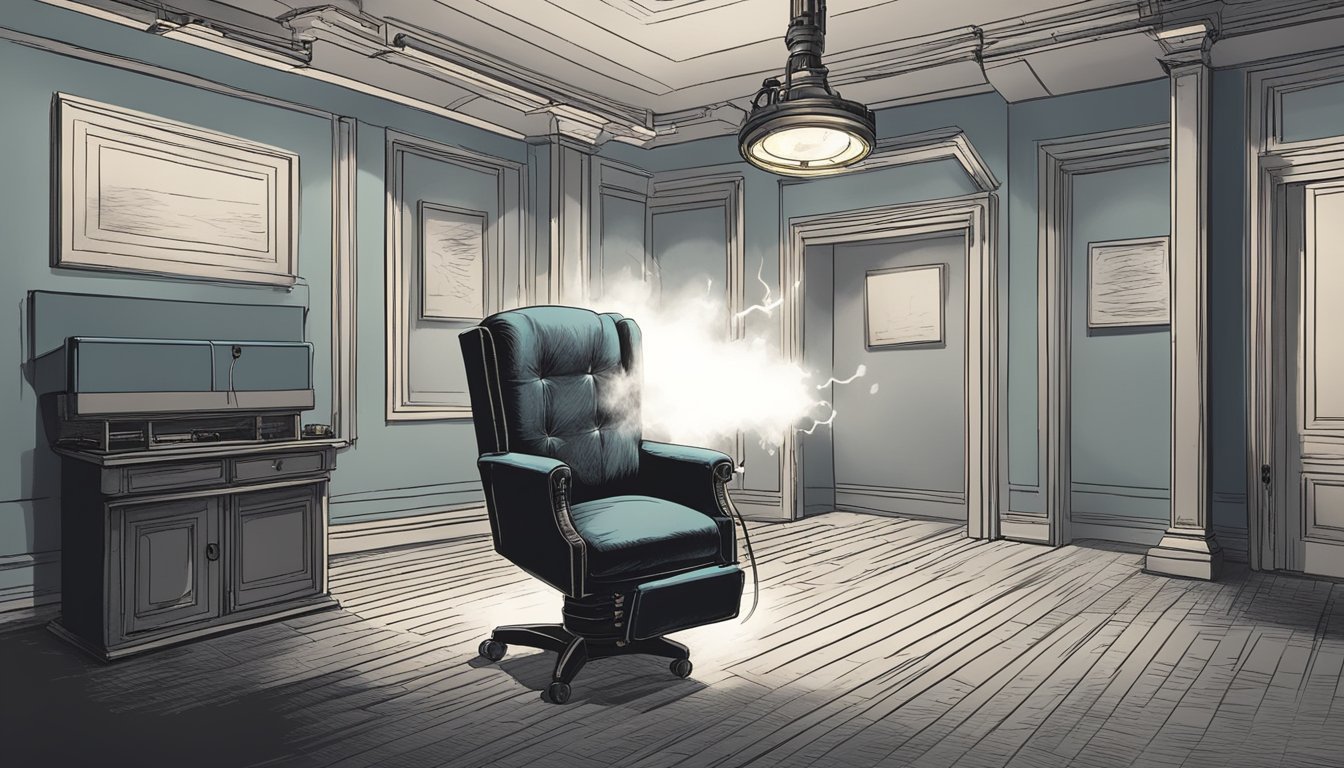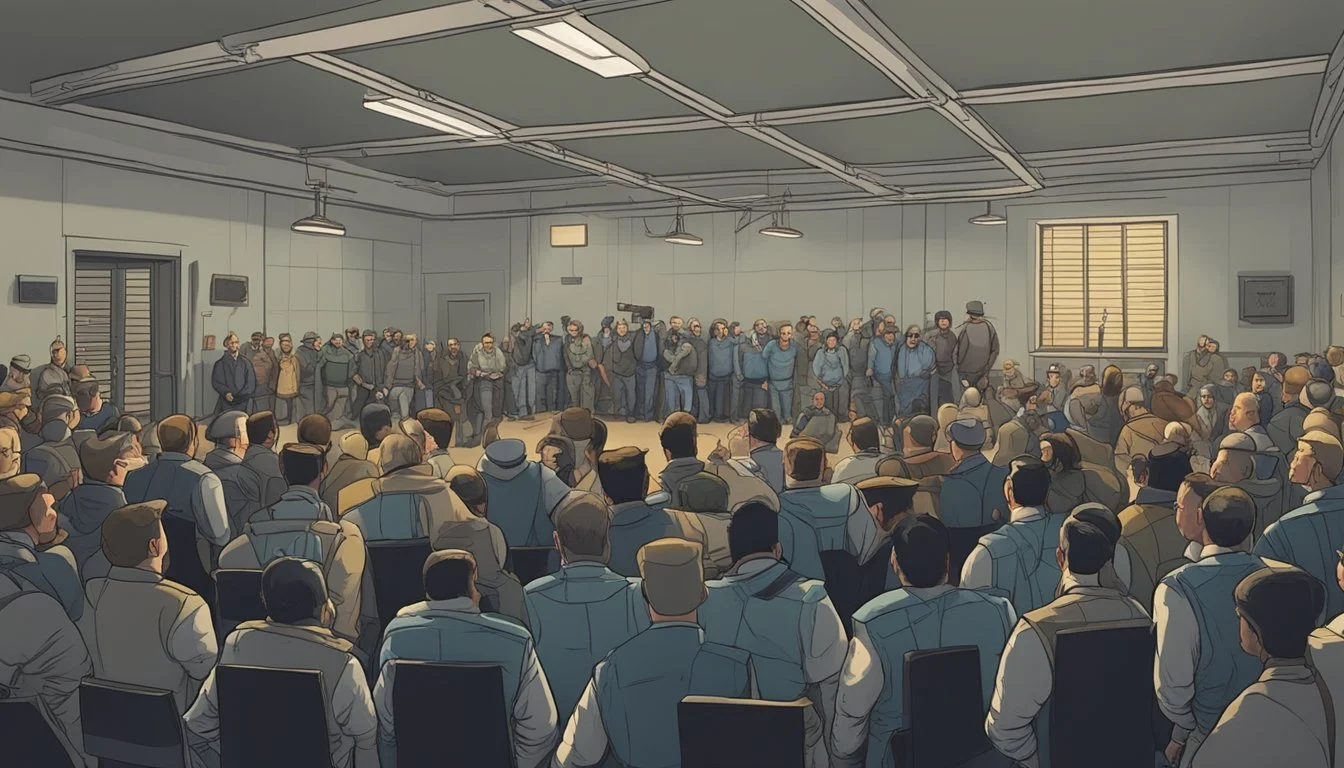Ted Bundy's Electric Finale: Charismatic Killer's Infamous Execution
Last Moments on Death Row
Ted Bundy, one of America's most infamous serial killers, met his end in Florida's electric chair on January 24, 1989. As the sun rose over Florida State Prison, Bundy's reign of terror officially came to a close. The execution marked the culmination of a dark chapter in criminal history, with Bundy having been convicted of multiple murders committed between 1974 and 1978.
Bundy's final moments were a stark contrast to his charismatic public persona. Witnesses reported that he spent his last night weeping and praying. At 7:06 AM, the executioner threw the switch, sending a lethal electrical current through Bundy's body. Ten minutes later, a doctor pronounced him dead.
The execution drew significant public attention, with a crowd of about 500 people gathering outside the prison. Many cheered when news of Bundy's death was announced, reflecting the intense emotions his crimes had stirred in the public consciousness. Bundy's execution served as a definitive end to the case of one of the most notorious serial killers in American history.
The Crimes of Ted Bundy
Ted Bundy's horrific series of murders shocked America in the 1970s. His charisma and charm masked a brutal predator who left a trail of victims across multiple states.
Murderous Beginnings
Bundy's killing spree likely began in 1969 when he was 22 years old. His early victims were young women in Washington and Oregon. Bundy would often approach them in public places, feigning injury or posing as an authority figure. He then lured or forced them into his vehicle.
Many victims disappeared from college campuses or busy areas. Bundy sometimes broke into homes at night to assault sleeping women. He confessed to decapitating at least 12 victims and engaging in necrophilia with their corpses.
Path of Terror
Bundy's murders spanned at least seven states. He was most active in Washington, Utah, and Colorado between 1974-1978. Bundy focused on attacking young, attractive women, often college students.
His tactics evolved to include more brazen daytime abductions. In one infamous incident, he kidnapped two women in broad daylight at Lake Sammamish State Park near Seattle. Bundy sometimes revisited crime scenes to groom and violate the corpses of his victims.
In 1978, Bundy committed his final murders at Florida State University's Chi Omega sorority house. He bludgeoned and strangled two women to death and severely injured two others.
Capture and Trial
Law enforcement struggled to catch Bundy due to his chameleon-like ability to change his appearance. He was finally arrested in Florida in 1978 after attempting to kidnap another woman.
Bundy was charged with the Chi Omega murders and the killing of 12-year-old Kimberly Leach. Despite acting as his own attorney, he was found guilty and sentenced to death. Before his execution, Bundy confessed to 30 homicides, though experts believe the true number of victims is likely higher.
Legal Proceedings
Ted Bundy's legal saga spanned multiple states and jurisdictions. His trial and subsequent time on death row involved numerous appeals and legal maneuvers.
The Trial
Bundy's Florida trial began on June 25, 1979, for the murders of Lisa Levy and Margaret Bowman. He acted as his own attorney, cross-examining witnesses and presenting evidence. The prosecution brought forth forensic evidence, including bite mark analysis matching Bundy's teeth to wounds on the victims.
Eyewitness testimony placed Bundy near the crime scene. Despite his charismatic performance, the jury found him guilty on July 24, 1979. The judge sentenced Bundy to death by electric chair.
Death Row and Appeals
Bundy spent nearly a decade on death row at Florida State Prison. He filed multiple appeals, arguing ineffective counsel and challenging the constitutionality of his sentence. His legal team exhausted every avenue, including petitions to the U.S. Supreme Court.
In his final days, Bundy confessed to additional murders in an attempt to delay his execution. He granted interviews to investigators and religious figures. On January 17, 1989, the Supreme Court denied Bundy's last appeal.
Bundy's final words to his lawyer were: "Jim, I'd like you to give my love to my family and friends." He was executed on January 24, 1989, at 7:16 a.m.
The Final Chapter
Ted Bundy's execution marked the end of his reign of terror. His last hours were filled with ritual, spectacle, and scientific examination.
Last Meal Tradition
Ted Bundy declined a special last meal. He was offered the standard prison fare: steak, eggs, hash browns, and toast. Bundy refused this meal as well.
Prison officials noted his lack of appetite in the hours leading up to his execution. This refusal of food is not uncommon among death row inmates facing imminent execution.
Execution Day Event
On January 24, 1989, Bundy was led to the execution chamber at Florida State Prison. Guards strapped him into the electric chair at 7:06 AM.
A black hood was placed over Bundy's head. The executioner activated the chair, sending 2,000 volts through Bundy's body.
At 7:16 AM, a doctor pronounced Ted Bundy dead. Witnesses reported seeing smoke rise from his leg.
Life After Death: The Autopsy
Following his execution, Bundy's body underwent an autopsy. Medical examiners focused on his brain, searching for abnormalities that might explain his violent behavior.
The autopsy revealed no significant brain injuries or abnormalities. This finding contradicted theories that Bundy's actions were the result of physical brain trauma.
Bundy's reported high IQ was also a subject of interest. However, the autopsy provided no physical evidence to support claims of exceptional intelligence.
Bundy's Influence on Culture and Media
Ted Bundy's crimes and execution left an indelible mark on American culture, sparking a surge of interest in true crime and inspiring numerous media portrayals.
True Crime Fascination
Bundy's case fueled public fascination with serial killers and true crime stories. His charismatic persona and brutal crimes captivated audiences, leading to increased demand for true crime content. This interest manifested in books, documentaries, and podcasts exploring Bundy's life and crimes.
Netflix capitalized on this fascination with "Conversations with a Killer: The Ted Bundy Tapes." The series provided insights into Bundy's psyche through recorded interviews, attracting millions of viewers.
True crime podcasts often feature Bundy's case, analyzing his methods and psychology. This ongoing interest demonstrates the lasting impact of Bundy's crimes on public consciousness.
Print and Screen Legacy
Bundy's story has been adapted into numerous books, films, and TV series. Ann Rule's "The Stranger Beside Me" became a true crime classic, offering a personal perspective on Bundy.
Hollywood has produced multiple Bundy-inspired films, including "Extremely Wicked, Shockingly Evil and Vile" starring Zac Efron. These portrayals often explore Bundy's charm and double life.
Documentaries like "Ted Bundy: Falling for a Killer" provide new perspectives on his crimes and their impact on victims. The Los Angeles Times and other major publications continue to revisit Bundy's case, examining its cultural significance decades after his execution.
Victim Impact and Remembrance
Ted Bundy's reign of terror left an indelible mark on his victims' families and communities. The devastating loss of young lives shattered countless hearts and forever altered the course of many families.
Kimberly Leach, Bundy's youngest known victim at just 12 years old, became a symbol of innocence lost. Her tragic death in 1978 shocked the nation and highlighted the ruthlessness of Bundy's crimes.
Elizabeth Kendall, Bundy's former girlfriend, grappled with the trauma of her connection to the killer. Her experiences shed light on Bundy's ability to deceive those closest to him.
Survivors of Bundy's attacks faced a long road to recovery, both physically and emotionally. Many struggled with post-traumatic stress and the lingering effects of their encounters with the charismatic killer.
Victims' families found solace in support groups and advocacy work. Some channeled their grief into efforts to improve victim rights and support services for those affected by violent crime.
Memorial scholarships and foundations were established in honor of Bundy's victims, ensuring their legacies lived on through education and community service. These initiatives serve as a testament to the enduring impact of their lives.
The execution of Ted Bundy brought a sense of closure to many, but the pain of loss remained. Victims' families continue to honor their loved ones' memories and work to prevent similar tragedies in the future.
Understanding Criminality
Ted Bundy's case provides a chilling glimpse into the mind of a serial killer. His actions defied simple explanations, challenging our understanding of criminal behavior.
Bundy's background as a law student contrasted sharply with his violent crimes. This duality highlighted the complexity of criminal psychology.
Several factors may contribute to the development of a serial killer:
Childhood trauma
Genetic predisposition
Social isolation
Desire for power and control
Bundy exhibited traits common among serial killers:
Charm and manipulation
Lack of empathy
Thrill-seeking behavior
Meticulous planning
His ability to blend into society while committing heinous acts baffled law enforcement and the public. This challenged assumptions about the appearance and behavior of criminals.
Bundy's case sparked increased interest in criminal profiling. It led to advancements in forensic psychology and investigative techniques.
The study of Bundy's criminality continues to inform our understanding of serial killers. It emphasizes the importance of early detection and intervention in potentially dangerous individuals.


